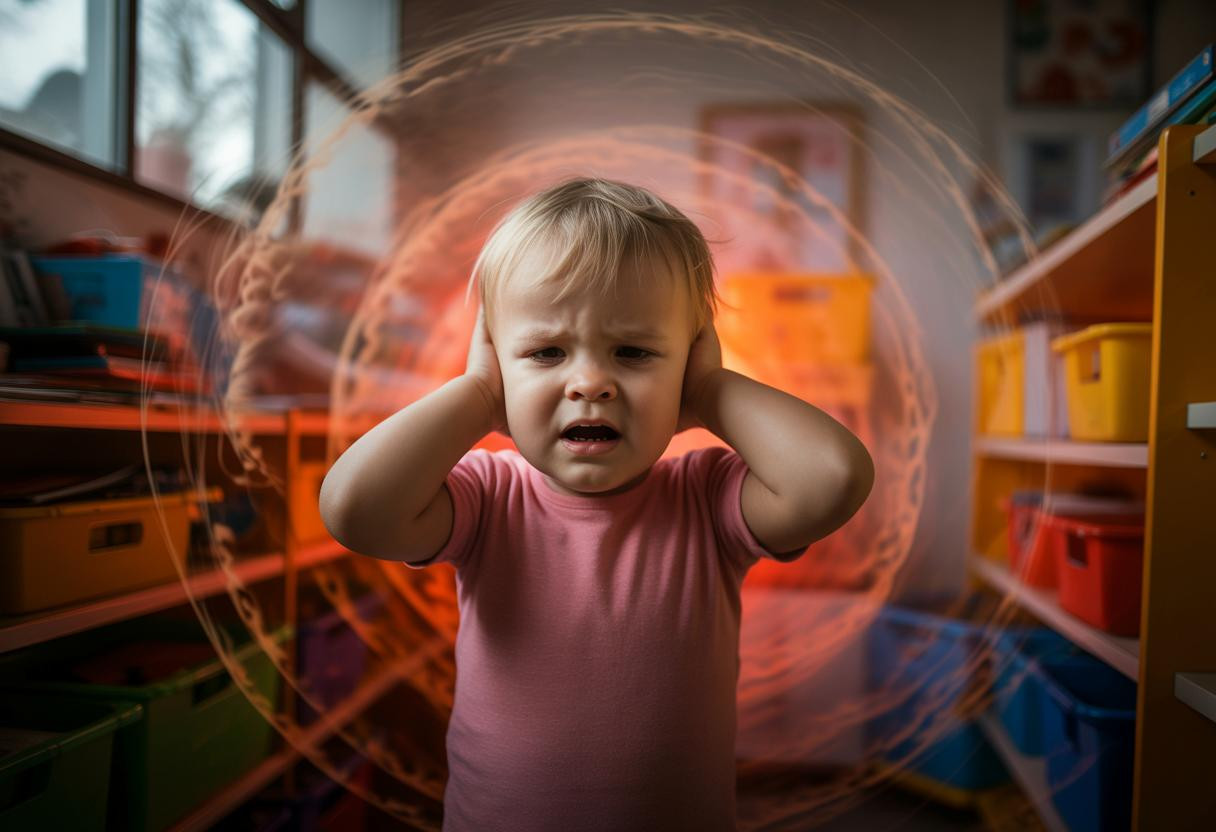New research reveals that toddlers exposed to noise pollution in school environments show measurably slower brain development in critical areas responsible for attention, memory, and language processing. What makes this discovery particularly alarming is that these cognitive impacts can persist well into adulthood, potentially affecting a child’s entire academic trajectory.
While most parents worry about obvious dangers like playground injuries or infectious diseases, the invisible threat of chronic noise exposure is silently undermining their children’s neurological development in ways that traditional safety measures can’t protect against.
The hidden epidemic affecting millions of developing minds
Environmental noise pollution has become an unrecognized public health crisis for early childhood development. A comprehensive study tracking 2,680 children found that those attending schools with higher traffic noise levels showed significantly slower development in working memory and attention span compared to peers in quieter environments.
Unlike adults who can mentally filter background noise, toddlers’ developing brains lack the neurological infrastructure to distinguish between important sounds and environmental interference. This means that every decibel matters during these crucial formative years when neural pathways are rapidly forming.
The timing couldn’t be more critical, as children today are exposed to noise levels that exceed recommended safety thresholds in 40% of urban schools.
How noise pollution rewires developing brains
Stress hormones hijack cognitive development
When toddlers are consistently exposed to noise pollution, their bodies produce elevated levels of cortisol and adrenaline. These chronic stress hormones literally reshape brain architecture, particularly in the hippocampus where memory formation occurs.
Research shows that children in noisy environments develop smaller hippocampal volumes, which directly correlates with reduced reading comprehension and mathematical reasoning abilities later in childhood.
Language acquisition becomes severely compromised
Perhaps most concerning is noise pollution’s impact on speech development. Toddlers need to hear subtle phonetic differences to develop proper language skills, but competing acoustic signals disrupt this delicate process.
Children exposed to consistent background noise show delays in vocabulary acquisition and struggle with phonological awareness—the foundation skill necessary for reading success. Some ancient techniques that reduce anxiety by 73% could potentially help mitigate stress responses in affected children.
Executive function suffers long-term damage
The prefrontal cortex, responsible for planning and decision-making, shows measurable impairment in noise-exposed toddlers. This manifests as difficulty with impulse control and emotional regulation that can persist into adolescence.
Practical solutions that make an immediate difference
The most effective interventions focus on environmental modifications rather than trying to change children’s responses. Schools implementing acoustic treatments report 15-25% improvements in standardized test scores within just one academic year.
Parents can advocate for sound-dampening materials in classrooms, particularly those facing busy streets. Simple additions like carpeting, acoustic panels, and properly sealed windows can reduce ambient noise by 10-15 decibels—enough to protect developing brains.
Understanding how environmental design affects psychological well-being can help parents create optimal learning spaces both at school and home.
Creating protective environments for optimal development
Home-based noise reduction strategies
Establish designated quiet zones during critical learning hours, particularly in the morning when cortisol levels naturally peak. Use white noise machines strategically to mask intermittent traffic sounds rather than eliminate all auditory input.
Advocacy and policy changes
Push for local zoning laws that restrict heavy traffic near schools during peak learning hours. Several European cities have implemented “quiet school zones” with measurable improvements in cognitive test scores.
Research on mental techniques for maintaining focus and composure suggests that combining environmental modifications with mindfulness training produces the strongest protective effects.
Why this matters more than you realize
The window for optimal brain development closes rapidly in early childhood. Every month of noise exposure during toddlerhood represents irreplaceable neural development time that cannot be fully recovered later.
However, the research also reveals hope: children moved to quieter learning environments show remarkable cognitive recovery within 6-12 months, demonstrating the brain’s incredible plasticity when given the right conditions to thrive.
